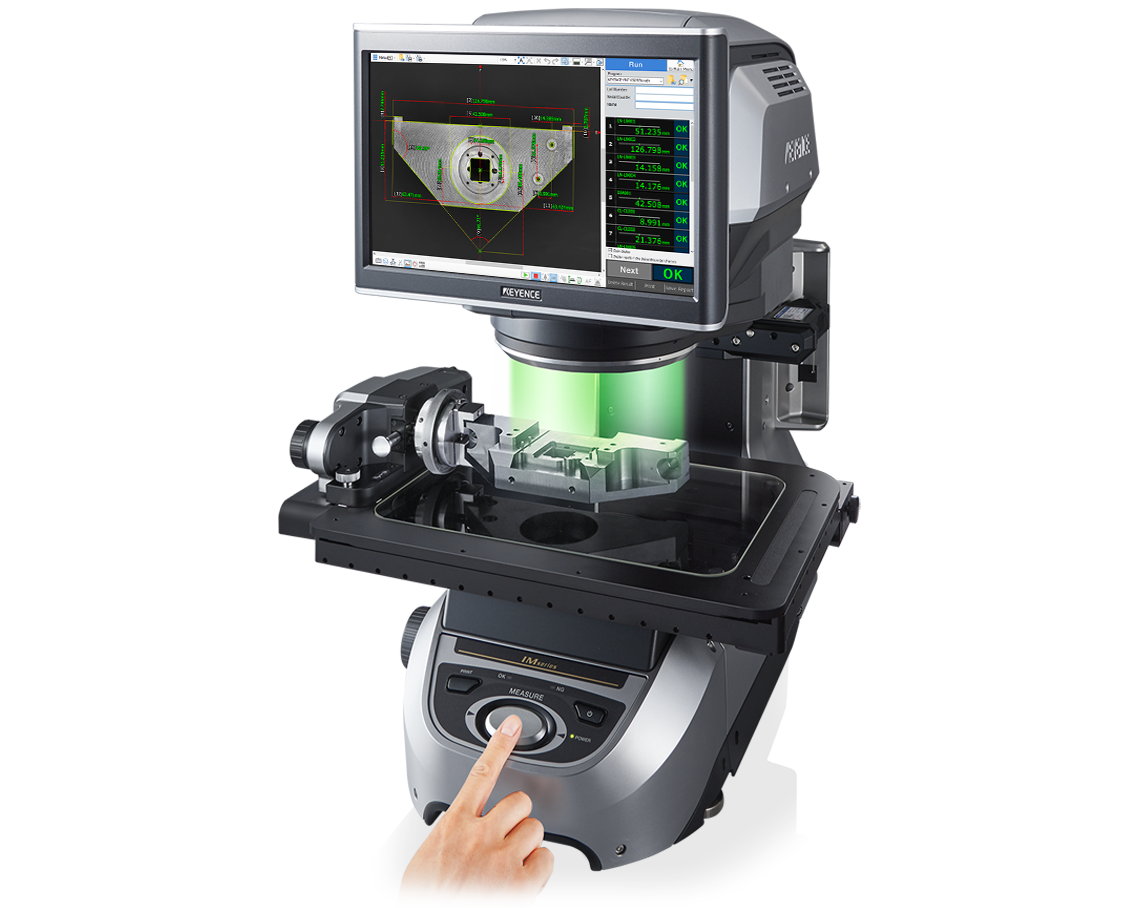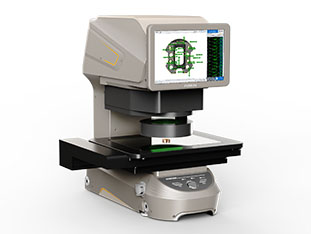Advantages of using optical measurement systems in multi-material inspection processes
The Role of Optical Measurement Systems in Advancing Width Techniques
Optical dimension systems have actually changed metrology, bringing a degree of precision that was when unthinkable. You could be amazed to discover just how these innovations, based on essential principles like reflection and interference, are used throughout various sectors. Their non-contact capabilities not just boost accuracy yet likewise streamline processes. As you discover even more, you'll find how these systems are forming the future of dimension and high quality control.
The Evolution of Metrology: A Historic Viewpoint
As you check out the history of width, you'll find that its evolution mirrors humankind's quest for precision and standardization. From old worlds using body components as systems of measurement to the advancement of standard weights and steps, each step shows our need for precision. The Egyptians developed the pyramids using specific dimensions, while the Romans advanced engineering with their innovative measuring devices.
During the Renaissance, scientific developments shifted the emphasis toward much more empirical techniques, leading the way for modern width. The introduction of the metric system in the late 18th century marked a substantial milestone, establishing universal standards. Throughout the 20th century, technological improvements better changed width, enabling highly accurate measurements in various fields.
Today, metrology remains to develop, integrating digital innovation and automation. This background highlights not simply the relevance of dimension yet additionally our unrelenting pursuit of improving accuracy and uniformity in our significantly complex globe.
Concepts of Optical Dimension Solutions
Comprehending the principles behind optical measurement systems is vital for precise cause metrology. You'll intend to take into account fundamental optical principles, measurement precision variables, and reliable system calibration strategies. Each of these aspects plays a crucial role in guaranteeing your measurements are precise and dependable.
Basic Optical Concepts
While checking out optical measurement systems, you'll encounter basic optical principles that form the foundation of precise data procurement. Light behaves in predictable means, and comprehending these behaviors-- like diffraction, refraction, and representation-- is important for effective dimensions. You'll utilize lenses and mirrors to adjust light and focus it onto your target, ensuring precision in your readings. In addition, the wave nature of light permits disturbance patterns, which can improve dimension resolution. Polarization can likewise play a vital function in distinct signal from noise, enhancing the clearness of your results. By grasping these concepts, you'll be geared up to utilize optical innovations properly, leading the way for advancements in assessment and guaranteeing your measurements are both repeatable and dependable.
Dimension Precision Factors
To achieve high dimension accuracy in optical systems, numerous aspects come into play, affecting the dependability of your results. High-grade lenses and detectors minimize aberrations and noise, guaranteeing your measurements are specific. By attending to these factors, you can boost the overall efficiency of your optical measurement systems, leading to even more trustworthy and accurate results in your width applications.
System Calibration Methods
Attaining high dimension accuracy is just component of the equation; proper system calibration methods are just as vital in optical dimension systems. To assure your system delivers trustworthy outcomes, you should consistently calibrate it utilizing typical reference materials. Begin by readjusting the optical parts, like lenses and mirrors, to minimize systematic errors. Next, utilize well-known measurements to confirm the system's outcome and make essential corrections. It's likewise crucial to represent ecological variables-- temperature level and moisture can influence dimensions. Implement a routine calibration schedule to maintain uniformity with time. Document all calibration procedures and results; this will certainly aid you track efficiency and attend to any type of drift in accuracy. With these techniques, you'll enhance the integrity of your optical dimension system.
Trick Technologies Behind Optical Measurement
Optical measurement systems depend on a number of essential technologies that enhance accuracy and effectiveness in metrology. One essential technology is interferometry, which makes use of the interference of light waves to gauge little displacements and surface area irregularities with severe precision. You'll also find laser scanning systems, which catch comprehensive 3D information of items quickly, making them vital for dimensional analysis.
In Addition, CCD and CMOS sensors play a significant duty in converting light right into electrical signals, permitting for high-resolution imaging and accurate dimensions. Advanced algorithms for photo processing additionally improve dimension precision by examining information in real time, removing noise and improving attributes.
Lastly, optical fiber provide versatility and the capacity to measure in tough environments while preserving signal honesty. By leveraging these technologies, you can accomplish premium results in your assessment tasks, making certain that your measurements are both accurate and trustworthy.
Applications of Optical Dimension in Industry
As markets significantly require precision and effectiveness, the applications of optical measurement systems have come to be essential across various markets. In production, these systems aid you more helpful hints keep track of measurements and resistances in real-time, making certain quality control without time-consuming manual checks. In the automobile industry, optical dimensions assist in aligning elements with precision, improving security and efficiency.
In electronic devices, you're using optical methods to examine minute features on circuit boards, discovering flaws that might cause failings. The aerospace market take advantage of non-destructive testing techniques, allowing you to assess materials and parts without endangering their honesty.
Optical dimension likewise plays a crucial function in textiles, making certain fabric measurements fulfill specific specs. optical measurement. With their capacity to supply high-resolution data rapidly, these systems empower you to make enlightened choices, improve processes, and inevitably drive technology throughout your industry
Enhancing Precision and Performance in Measurements
When you think concerning improving accuracy in dimensions, accuracy in your measurement strategies is necessary. By enhancing these processes, you can attain quicker outcomes without giving up high quality. Let's discover how embracing innovative optical dimension systems can raise both precision and effectiveness in your work.
Accuracy in Measurement Techniques
Accuracy in dimension strategies is essential for achieving reputable outcomes in assessment, particularly considering that little inconsistencies can lead to considerable mistakes. By using sophisticated optical measurement systems, you can enhance the accuracy of your measurements. In addition, precise measurements permit you to keep top quality control, making sure that items satisfy strict specifications.
Improving Measurement Procedures
To boost accuracy and efficiency in measurements, simplifying your dimension processes is vital. Start by adopting optical dimension systems that supply real-time data, decreasing the time invested in hands-on recording. These systems frequently integrate flawlessly with existing software application, enabling you to automate data collection and evaluation.
Next, standardize your dimension procedures. By executing regular treatments, you decrease variability visit and enhance repeatability. Don't neglect to routinely adjust your devices to guarantee its accuracy.

The Impact of Optical Dimension on R & D
As researchers venture to press the borders of development, optical measurement systems have actually come to be essential devices in the development process. These systems offer you with exact, real-time information that enhances your ability to analyze complex materials and structures. In different areas, from biotechnology to aerospace, you rely upon optical dimensions to boost and maximize layouts item efficiency.

With high-resolution imaging and non-contact approaches, you can minimize sample disturbance, enabling for even more precise outcomes. This capability to record minute details accelerates your R&D cycle, allowing you repeat layouts promptly and successfully. In addition, optical dimension cultivates collaboration throughout techniques, as the information produced is frequently easily interpretable and shareable.
Eventually, integrating optical dimension systems into your research not just improves productivity but additionally strengthens your understanding of the phenomena you research. By leveraging these sophisticated techniques, you're far better furnished to innovate and remain ahead in a competitive landscape.
Future Fads in Optical Measurement Equipments
With the fast development of modern technology, you're most likely to see significant changes in optical measurement systems that will certainly redefine their application across numerous industries. You'll see an approach boosted automation and integration of fabricated intelligence, enabling real-time data evaluation and enhanced precision. Miniaturization is another pattern; portable tools will certainly enable dimensions in tighter spaces, making them perfect for areas like aerospace and biomedical applications.
Anticipate to see systems that can run in tough settings, providing reputable dimensions in severe problems. As these modern technologies merge, you'll locate that optical measurement systems not only enhance precision but also improve process, eventually driving advancement and performance in your tasks.
Regularly Asked Inquiries
Just How Do Optical Dimension Equipments Contrast to Standard Dimension Techniques?
Optical measurement systems use higher precision and faster results compared to traditional strategies. You'll locate they record even more data points accurately, reducing human error and increasing integrity, making them a recommended selection in different applications.
What Industries Benefit Many From Optical Measurement Systems?
You'll locate markets like aerospace, automotive, and electronic devices profit most from optical measurement systems. These industries rely upon precise dimensions to guarantee quality and efficiency, improving efficiency and lowering prices with advanced modern technology.

Are Optical Measurement Equipments Expensive to Execute?
Optical dimension systems can be expensive to carry out, but their precision and performance typically warrant the cost. Buying such technology can result in substantial long-term cost savings and renovations in quality throughout numerous applications.
What Skills Are Needed to Run Optical Measurement Solutions?
To run optical measurement systems, you'll need solid analytical skills, focus to detail, and efficiency in software program tools. Experience with optics and an understanding of dimension principles will likewise boost your effectiveness and efficiency.
Exactly How Do Ecological Variables Influence Optical Measurements?
Environmental aspects like temperature level, moisture, and air quality can distort optical measurements. You'll discover variations in accuracy because of light interference or refraction. optical measurement. Keeping secure problems is necessary for precise and reliable optical measurement outcomes
Verdict
In recap, optical measurement systems are changing assessment by offering unmatched accuracy and efficiency. As you discover future patterns, you'll see how the This Site combination of AI and automation will proceed to elevate dimension practices, driving technology and enhancing quality control.
Accomplishing high measurement precision is only part of the formula; proper system calibration strategies are similarly essential in optical measurement systems.When you assume regarding boosting accuracy in dimensions, precision in your measurement strategies is vital. By making use of sophisticated optical dimension systems, you can enhance the precision of your dimensions.To enhance accuracy and performance in dimensions, simplifying your measurement procedures is important. Exactly How Do Optical Dimension Systems Compare to Typical Measurement Techniques?